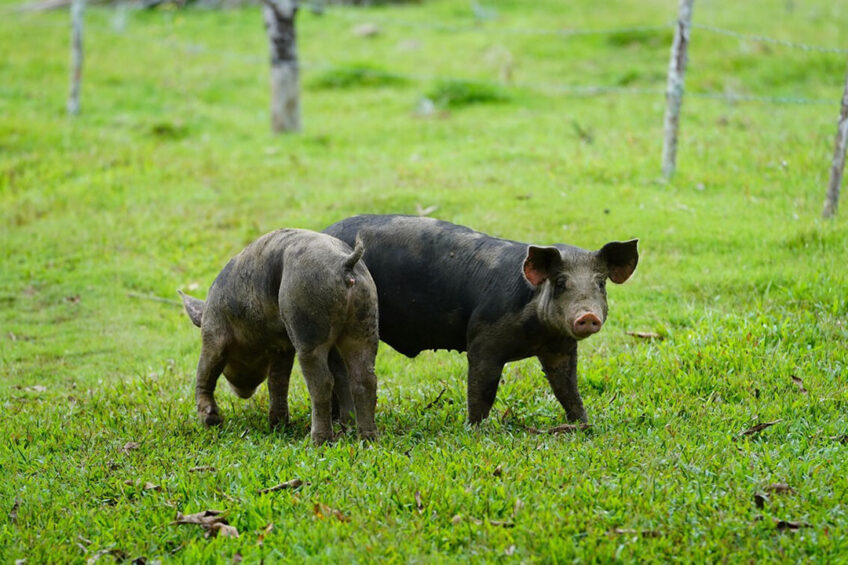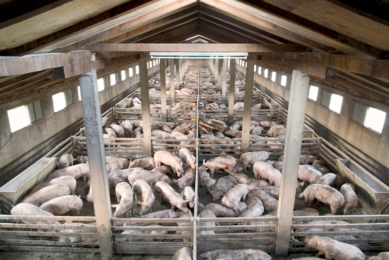ASF Dominican Republic: Virus spreads to 11 provinces

Outbreaks of African Swine Fever have been found in 9 more provinces in the Dominican Republic, bringing the total to 11 of the 32 provinces. The country has announced to cull tens of thousands of pigs to get the outbreaks under control.
The number of 11 provinces was reported on Monday August 2 by the Official Commission for the Control and Eradication of Outbreaks of African Swine Fever. Immediately, the protocol was activated for isolating the virus in those places.
Among the 11 provinces are Sánchez Ramírez and Monte Cristi which were made public last week. In addition, infected locations were found in the provinces Santiago, Hermanas Mirabal, La Vega, Elías Piña, San Juan, the National District, Dajabón, Santiago Rodríguez and Duarte. Sanitary control brigades are heading towards the demarcations to intervene the backyard hatcheries, since they are susceptible to contracting the disease.
A press release by the Dominican Ministry of Agriculture explained that an Official Commission for the Control and Eradication of Outbreaks of African Swine Fever has declared itself to be in permanent session. Its goal is to strengthen the measures implemented in the country and optimise inter-institutional coordination with the different teams that are in the field in the work of lifting, control and eradication of ASF.
Affected pig farmers will get compensated
In a press conference, attended by news agency Reuters, Fernando Duran, administrator of the state-run Banco Agrícola, told the government will pay pig farmers the market price of each animal slaughtered.
Through Banco Agrícola, the authorities guarantee payment according to the current market price for the pigs that are slaughtered in the demarcations so that the producers are not economically affected. Experts from Banco Agrícola are carrying out the paperwork, allowing pig farmers to withdraw the compensation funds within 12-15 days.
Rafael Abel, head of the agriculture committee in the lower house of Congress, estimated last week that the slaughter would result in economic losses of around $ 180 million.
The slaughter and burial of pigs
Julio Cesar Estevez, director of the ministry of agriculture in the northwest region in the Dominican Republic, told Reuters that brigades equipped with biosecurity suits would handle the slaughter and bury the animals in pits to try to contain the spread of the illness.
Estevez added that said brigade members would also confiscate pigs raised privately for personal consumption. He estimated that if operations to kill the pig population began immediately, the outbreak could be eradicated in about 5 months.
How it started with ASF in the Dominican Republic
The announcement of the slaughter comes after the news broke last week that the US Animal and Plant Health Inspection Service (APHIS), tested Dominican samples and found them to be positive for ASF. The virus was initially confirmed in farms in Monte Cristi province (north west) and Sánchez Ramírez province in the heart of the Dominican Republic.

The initial report: After 40 years, ASF is back in the Dominican Republic
Actions taken in Sánchez Ramírez province
Zooming in on Sánchez Ramírez province, actions are in full swing. The authorities took action on Sunday and emptied backyard pig farms located in various towns. Until the early hours of Sunday morning, they identified about 14,135 pigs raised in the backyard were identified in these locations.
Dominican newspaper Hoy reported that 5 teams made up of a veterinarian from the Directorate of Animal Production (Digega), part of the Ministry of Agriculture, an expert from the Banco Agrícola, assistants, workers and members of the national security have gone to the different farms to proceed to the slaughter of the animals.
In addition, contingency work and vehicle disinfection continue to be carried out throughout the province and in a preventive manner in nearby towns. These are carried out in conjunction with the Emergency Operations Center (COE), and e.g. the fire brigade, police and military.
Puerto Rico: A special case
A special case in these developments is the situation of Puerto Rico. The island, albeit not a US state, is territory of the United States and only 120km away from the Dominican Republic. It is unclear what would happen with international pork trade in case ASF was be detected on this island.
No surprise then that the government of Puerto Rico has urged people traveling to the Dominican Republic to avoid buying pork food and visiting farms in that nation. Supermarkets in Puerto Rico do not have Dominican meat of this type among their inventory, as the entry of pork and pork products from the Dominican Republic to the USA and its territories is prohibited in the context of Classical Swine Fever.

In the 1970s and early 1980s, ASF also broke out in the Dominican Republic as well as a few other countries in Latin America. Read how that went back then
UN sends out warning
The Food and Agriculture Organization of the United Nations (FAO) also alerted the countries about the recent detection of ASF in the Americas in 40 years. The FAO called on countries to quickly activate and review their contingency or emergency response plans to ASF, to prevent or quickly control any outbreak, since there is a great risk that it will spread to the rest of Latin America and the Caribbean.
Apart from the FAO, also the Inter-American Institute for Cooperation on Agriculture (IICA) and the International Regional Organisation for Agricultural Health (OIRSA) have provided technical and financial support to counteract the ASF virus.











